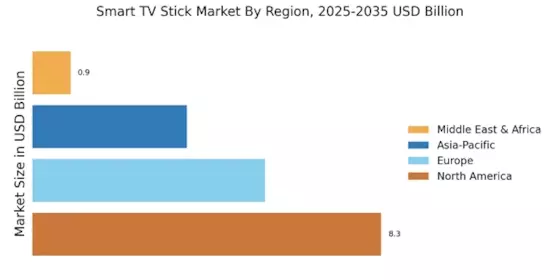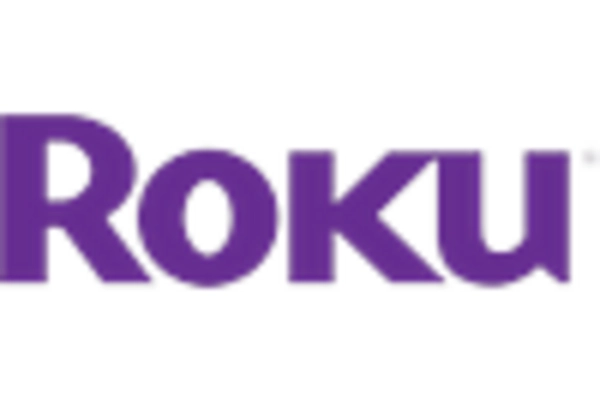Growing Popularity of Cord-Cutting
The trend of cord-cutting is reshaping the Smart TV Stick Market, as consumers increasingly abandon traditional cable subscriptions in favor of streaming services. This shift is driven by the desire for cost savings and greater flexibility in content consumption. Recent surveys indicate that nearly 30% of households have opted to cut the cord, leading to a heightened demand for devices that facilitate streaming. Smart TV sticks serve as a practical solution for these consumers, providing access to a wide array of channels and services without the need for a cable package. As this trend continues, the Smart TV Stick Market is poised for substantial growth, catering to the needs of a new generation of viewers.
Rising Demand for Streaming Services
The Smart TV Stick Market experiences a notable surge in demand for streaming services, driven by the increasing preference for on-demand content. As consumers gravitate towards platforms like Netflix, Hulu, and Amazon Prime Video, the need for devices that facilitate seamless access to these services becomes paramount. Recent data indicates that the number of streaming subscribers has reached over 1 billion worldwide, highlighting a significant market opportunity. This trend suggests that Smart TV sticks, which provide an easy and cost-effective way to access a plethora of streaming options, are likely to see continued growth. The convenience of these devices, coupled with their affordability, positions them as essential tools for modern entertainment consumption.
Expansion of Content Offerings and Partnerships
The Smart TV Stick Market is witnessing an expansion in content offerings and strategic partnerships among streaming platforms and device manufacturers. As competition intensifies, companies are increasingly collaborating to provide exclusive content and bundled services. Recent reports indicate that partnerships between Smart TV stick manufacturers and popular streaming services are on the rise, enhancing the value proposition for consumers. This trend not only enriches the content library available to users but also drives sales of Smart TV sticks as consumers seek devices that offer comprehensive access to diverse entertainment options. The ongoing expansion of content partnerships is likely to further stimulate growth in the Smart TV Stick Market.
Increased Internet Penetration and Connectivity
The Smart TV Stick Market is significantly influenced by the rising levels of internet penetration and connectivity across various regions. As broadband access expands, more households gain the ability to stream content directly to their televisions. Data suggests that internet penetration rates have surpassed 60% in many areas, facilitating a larger audience for Smart TV sticks. This increased connectivity not only enhances the appeal of streaming services but also encourages consumers to invest in devices that can optimize their viewing experience. Consequently, the growth of internet infrastructure is likely to propel the Smart TV Stick Market, as more users seek to leverage the benefits of high-speed internet for entertainment.
Technological Advancements in Streaming Devices
Technological innovations play a crucial role in shaping the Smart TV Stick Market. The introduction of 4K streaming capabilities, voice control features, and enhanced processing power has transformed the user experience. Recent advancements indicate that devices equipped with these technologies are gaining traction among consumers, as they offer superior performance and functionality. For instance, the integration of artificial intelligence in Smart TV sticks allows for personalized content recommendations, enhancing user engagement. As manufacturers continue to innovate and improve their offerings, the market is likely to witness an influx of advanced devices that cater to the evolving preferences of consumers, thereby driving growth in the industry.

















Leave a Comment